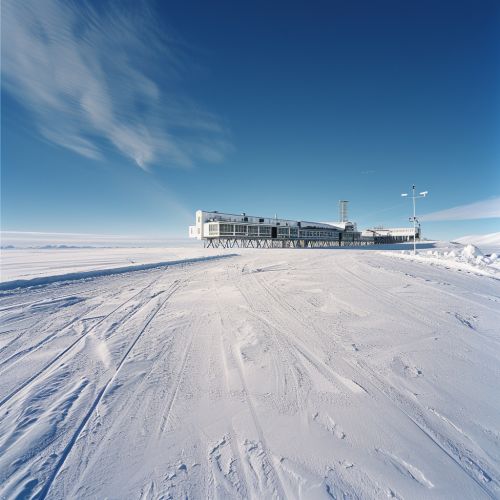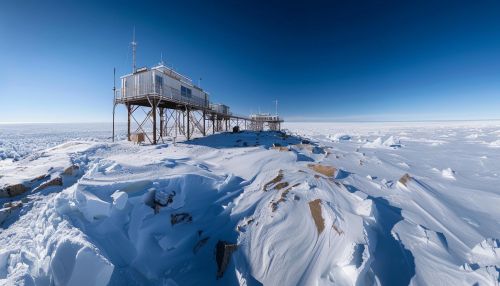Amundsen-Scott South Pole Station
Overview
The Amundsen-Scott South Pole Station is a United States scientific research facility located at the geographic South Pole, the southernmost place on the Earth. The station is located on the high plateau of Antarctica at an elevation of 2,835 meters (9,301 feet) above sea level. It is administered by the National Science Foundation under the United States Antarctic Program (USAP), which manages all U.S. scientific research and related logistics in Antarctica and on the Southern Ocean.


History
The station was established by the U.S. government in November 1956, a year after the Antarctic Treaty was signed, which prohibits military activity, mineral mining, nuclear testing, and nuclear waste disposal in Antarctica and only permits human involvement in the continent for scientific research. The station was named for Roald Amundsen and Robert F. Scott, who reached the South Pole in 1911 and 1912, respectively.
Structure and Facilities
The Amundsen-Scott South Pole Station has been rebuilt and expanded several times since it was established. The current station, dedicated on January 12, 2008, is an elevated, modular structure designed to avoid being buried by snow, which is a significant problem in this environment. The station is designed to house up to 150 people during the summer months, with a core group of around 50 winter-over personnel remaining during the winter months when temperatures can drop below -73 degrees Celsius (-100 degrees Fahrenheit).
Scientific Research
The primary focus of the research conducted at the Amundsen-Scott Station is on glaciology, geophysics, meteorology, upper atmosphere physics, astronomy, and astrophysics. One of the most significant projects is the IceCube Neutrino Observatory, a neutrino telescope constructed at the station. The observatory was completed in December 2010 and has been operational since then, providing valuable data on neutrinos and helping to answer fundamental questions about the nature of the universe.
Living Conditions
Living at the South Pole Station presents unique challenges due to the extreme environment, isolation, and the physiological effects of living at high altitude. The station is self-sufficient, with facilities for power generation, water production, waste treatment, food storage, and medical care. The station also has recreational facilities including a gym, library, and music room to support the mental well-being of the crew.
Environmental Impact
The U.S. Antarctic Program has implemented measures to minimize the environmental impact of the South Pole Station. Waste is sorted for recycling, incineration, or return to the U.S., and the station operates on a 'pack in, pack out' policy. The station also uses energy-efficient systems to reduce fuel consumption.
